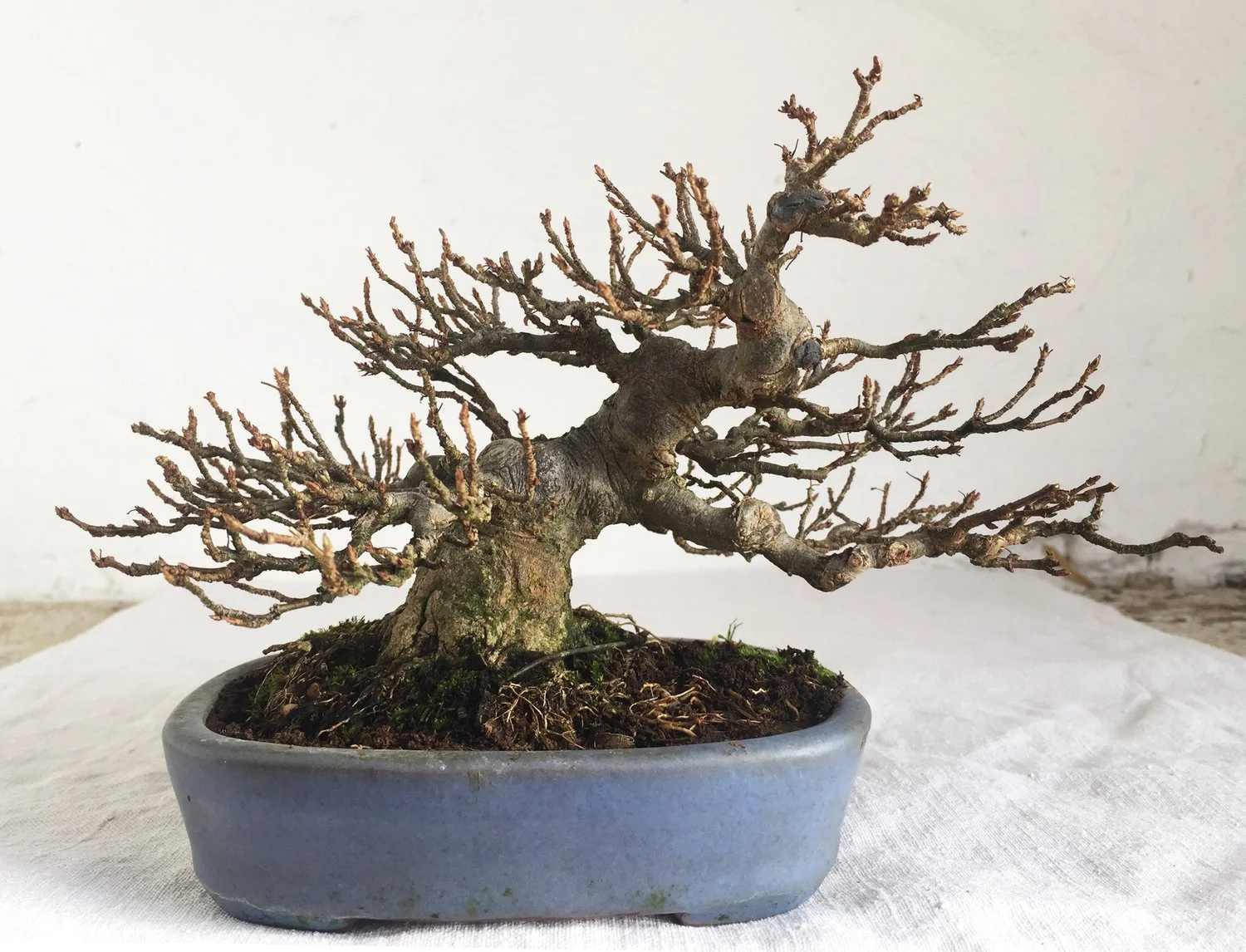Ramification
Ramification is the finely divided small twigs that can make our bonsai look more like real trees. When we look at an old tree we see the trunk and roots. We see larger branches growing from the trunk.
In terms of the pivotal points of work across the span of a bonsai’s creation, there are 3 key moments – selecting and developing the initial structure, then growing out and organizing the secondary branches, and finally, working to evenly distribute the strength across the tree to create tertiary ramification.
When we refer to pinching, this is a technique of using our finger to pinch off soft emerging growth before that growth ever hardens off. This technique stops the elongation of the internode, or spacing between the leaves, and removes the auxin, or growth hormone, at the very tip of the branch. Pinching allows us to strategically transition energy to stimulate buds on the interior that would have otherwise been suppressed. The pinching process is where we can begin to create fine ramification throughout the entire canopy of the tree.— Bonsai Mirai
Ensure you only trim branches that have been aged and matured. This is because nodes on younger branches may not sprout new growth until mature
Consider using defoliation in accordance with ramifications as a way to massively increase the density of your tree.
Trim and prune your bonsai regularly in order to stimulate growth.
Chinese elms and any pine species are both fantastic options to use for bonsai ramification. This is because these species both naturally tend to generate a lot of branches and stems naturally and already look like minute trees.
